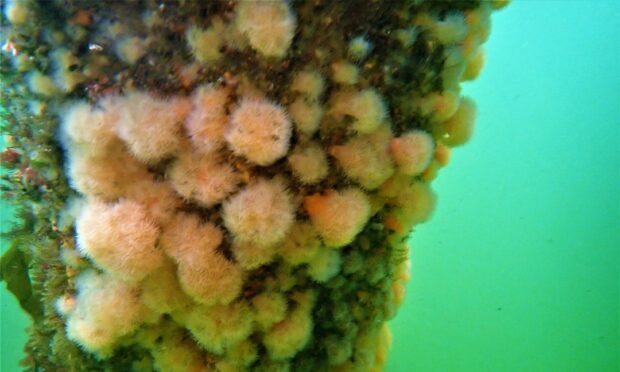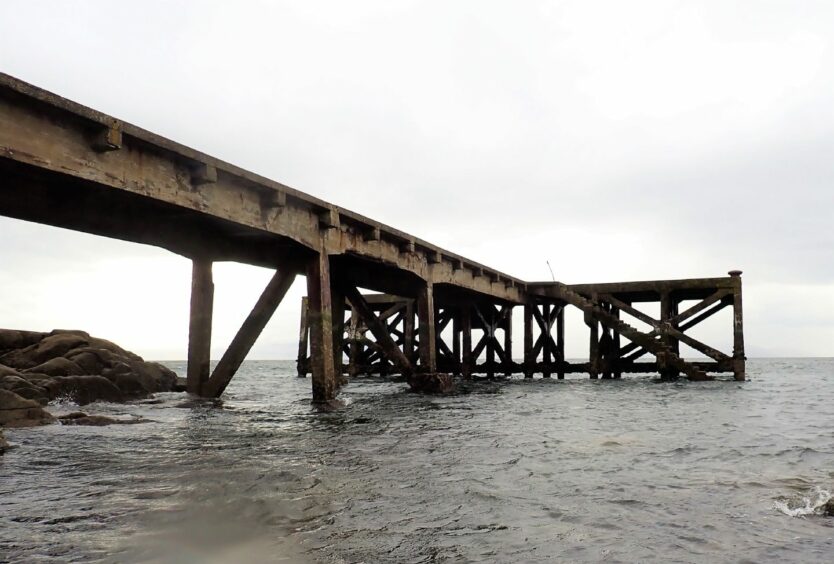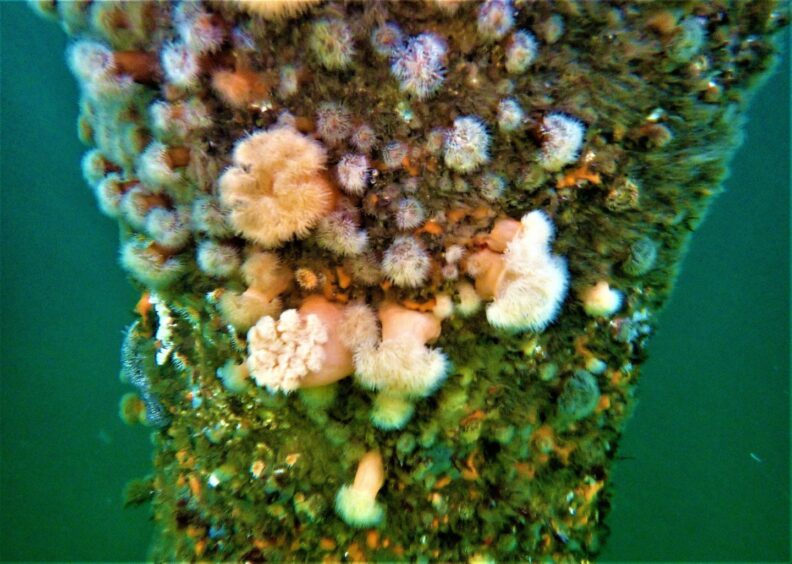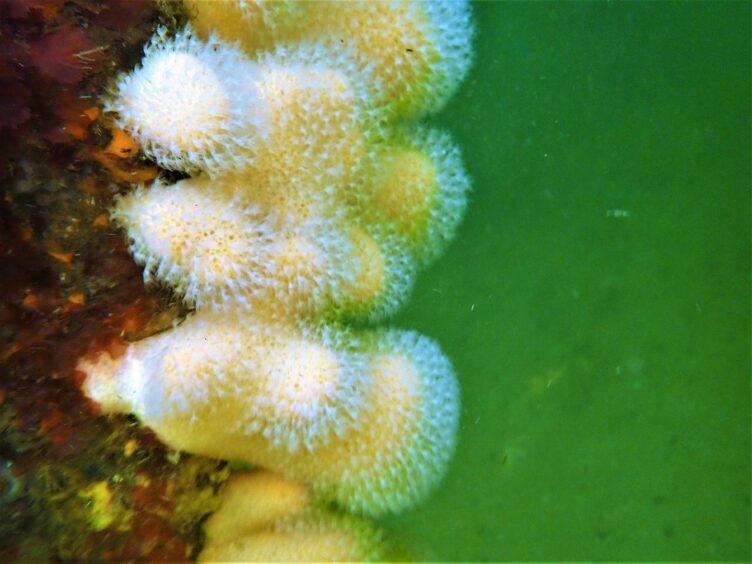After having forsaken snorkelling during winter, a strong hankering engulfed my soul to get back into the water and become immersed once more in the wild riches of the sea.
I had also become consumed with the wish to snorkel by a pier because such places provide shelter for an abundance of marine life.
Bobbing in Firth of Clyde
Thus, it was against this background that I found myself bobbing in the chilly waters of the Firth of Clyde by Portencross Pier in North Ayrshire.
I chose a low spring tide, which would make it easier to dive down and witness creatures that would otherwise be hard to reach in deeper water.
The visibility was reasonable and on flicking my flippers I soon reached the first of the steel piles that supported the T-shaped pier end.
Mussels and barnacles clung tenaciously to the upper parts of the stanchions.
They are resilient creatures, enabling to withstand the rigours of storms, fierce currents and crashing waves without becoming dislodged from their holdfasts.
Barnacles could easily be mistaken for molluscs, but curiously they are crustaceans and relatives of crab and lobsters.
Peering into the depths
While the barnacles and mussels on the upper pier supports were fascinating, my main interest lay in the deeper water below, and as my body rode the undulating waves, I peered down into the murky green depths.
Just within the range of visibility, an orange glimmer shone out.
I dived down and steadied myself by holding onto the pier support.
Before me lay the most exquisite creation, a cluster of orange-tinged fleshy lobes.
Surrounding each lobe was a soft, opaque furred fuzz that on closer inspection comprised of miniscule stalks tipped with white.
This was a soft coral known as dead-man’s fingers, so called because it is said to resemble the swollen, decomposing hand of a dead person.
What is dead-man’s fingers?
Each ‘finger’ consists of a colony of tiny organisms, called polyps, set upon a shared gelatinous skeleton to form a greater whole.
Each polyp has a mouth surrounded by tiny tentacles, which trap tiny food items in the water column.
I imagine the name ‘dead-man’s fingers’ arose from times past when people searching for survivors from shipwrecks became overwhelmed by the stress of the occasion, sending their minds spinning into overdrive and suspecting the worse.
Then, I snorkelled under the pier where on several of the supports lay a bewitching cornucopia of colour comprising large colonies of plumose anemones.
Breath-taking
Their beauty and form were breath-taking, elegant orange-brown anemones featuring long, slender tubular body columns with flickering tentacles that brimmed out over their tops like large, intricately frilled umbrellas.
As a biological comparison, these anemones were single polyps, while those that form dead-man’s fingers are integrated polyp colonies that act like one organism.
I snorkelled for a while longer, but the wind was picking up and the sea rising, so I swam back to the shore.
On pulling myself out onto a flat rock shelf, I barely noticed the cold such was my excitement at having glimpsed these wondrous marine creatures.




Conversation